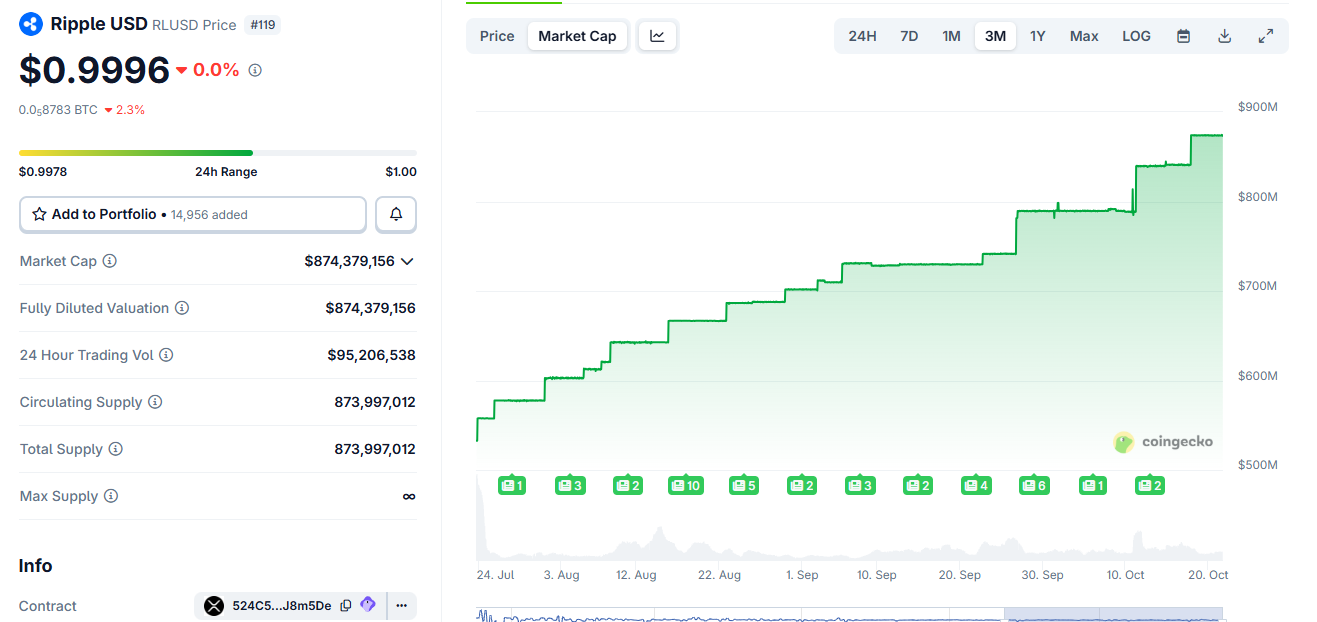The Fed’s new “skinny master account” proposal could reshape the way fintechs, stablecoin issuers, and crypto-focused banks access the U.S. financial system, and Ripple would be a big beneficiary.
Governor Chris Waller announced the plan at the Fed’s Payments Innovation Conference. He introduced limited access accounts that allow all legally eligible companies to connect directly to the Fed’s payment rails.
Ripple can connect directly to US payment systems
The Fed’s payment rails are the backbone of the U.S. banking system. Move money instantly between financial institutions and power services like wire transfers and payments.
Currently, only charter banks can use these rails directly. With this announcement, fintech and blockchain companies will be able to access real-time payments without relying on partner banks.
🚨Big news announced this morning from the @federalreserve Payments Innovation Conference.
Governor Chris Waller has announced that the central bank is proposing a new type of master account with limited access (or what he calls a “skinny master account”) for all legally eligible institutions. https://t.co/lZh0I0Tj3a pic.twitter.com/Wg7ygjpvJj
— Eleanor Terrett (@EleanorTerrett) October 21, 2025
Ripple, which applied for a master Fed account earlier this year, could see this as a major step forward.
The company has long sought to bridge blockchain payments and traditional financial infrastructure, most recently through its RLUSD stablecoin and enterprise liquidity network.
Unlike a full master account, the “skinny” version does not give you privileges such as borrowing from the Fed or earning interest on your reserves.
However, it provides an important payment facility, the same rails that commercial banks use for domestic remittances.
Ripple continues to expand its institutional business
This development occurred as Ripple expanded its organizational footprint.
In mid-October, Ripple announced that it would acquire GTreasury, a global financial management platform serving more than 1,000 enterprise customers, for $1 billion.
Additionally, the transaction will allow Ripple to embed blockchain liquidity solutions within its corporate treasury systems, complementing efforts to ensure regulatory access to payments infrastructure.
Ripple also backed Evernorth, a newly listed entity seeking more than $1 billion to hold and deploy XRP as an institutional liquid asset.
This effort coincides with RLUSD’s rise towards a $1 billion market cap and signals the growing use of Ripple’s ecosystem in real-world payments.

Ripple RLUSD stablecoin market capitalization chart. Source: CoinGecko
If adopted, the Fed’s limited-access master account framework could provide the regulatory bridge Ripple has been seeking since its legal battle with the SEC.
This will allow legally recognized companies like Ripple to connect RLUSD and XRP liquidity directly to US payment networks, reducing reliance on intermediaries.
Such access could validate compliant blockchain-based payment models and accelerate the integration of stablecoins into corporate finance.
It could also strengthen Ripple’s case for treating RLUSD as a payment method.
For the Fed, the proposal reflects a cautious attitude toward innovation. This expands access to core payments infrastructure while limiting financial tools and risk exposure.
For Ripple and other regulated digital asset companies, this could be the closest step to operating with payment terms on par with traditional banks.
The article Fed’s “skinny master account” proposal could benefit Ripple’s RLUSD and XRP integration appeared first on BeInCrypto.


